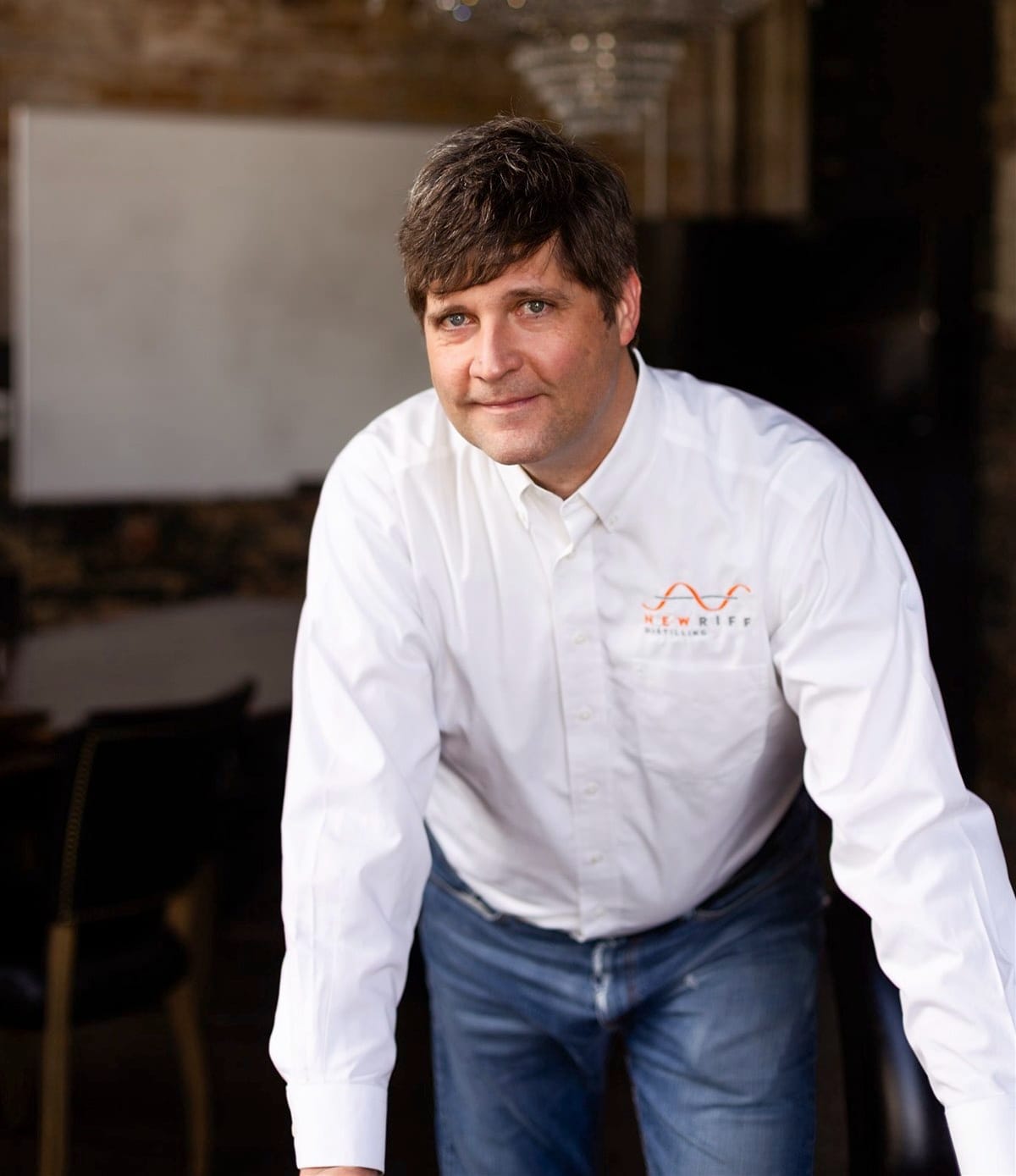[ad_1]
As co-founder and vp at New Riff Distilling, Jay Erisman helped construct the Newport, Ky., distillery and inspired proprietor Ken Lewis to leverage historic Kentucky practices—bitter mashing, high-rye mash payments, no chill filtration, conventional barrel ageing strategies—to develop distinct taste profiles for its whiskeys.
The Lewis-Erisman partnership started a few years prior with Erisman’s work as wonderful spirits supervisor at The Occasion Supply, the huge beverage retail outlet Lewis based and offered to his beloved staff. Throughout that point, Erisman gained entry to the manufacturing, warehouses, portfolios and product improvement at a number of the Kentucky’s prime distilleries, experiences that formed his revolutionary strategy to whiskey making.
Over a decade in the past, when the lads formulted their plans for New Riff (the title alludes to its new riffs on previous whiskey making traditions), one among many benchmarks set was that the primary whiskies bearing its title can be Bottled-In-Bond.
As these barrels of bourbon and rye reached maturity, about three-fourths of these heaps had been bottled, whereas the opposite quarter continued ageing. From these latter heaps got here a slew of specialty merchandise that includes distinctive barrels, heirloom grains and specialty malts. In 2023, its 7-year-old Bitter Mash Single Malt Whiskey debuted, adopted in 2024 by an 8-year rye and an 8-year bourbon. New Riff’s long-held want to provide older whiskies was coming to fruition, and barrels presently ageing past these numbers have Erisman satisfied that older releases are inevitable.
Erisman talked with BourbonBanter.com about that journey from 4-year to 8-year releases and, doubtlessly, effectively past.
Folks say on a regular basis they’ll’t imagine our whiskies are this good at 4 years previous. We love that. However we’ve all the time wished to have older whiskies. And since turning into an awesome small distillery of the world was all the time a objective of ours, we knew that objective needed to depend on older whiskey.
“Dude, we needed to make some cash!”
Holding again 20 to 30 % of what you make is a beneficiant factor to do, however ready is dear. You may have individuals who say, “Why didn’t you simply wait till it was 8 years previous in the beginning?” You inform them, “Dude, we needed to make some cash!” Firstly of a distillery, you’re hemorrhaging cash into barrels and warehouses yearly. You’ll be able to solely do this for therefore lengthy. No less than we selected Bottled-In-Bond, which was a gracious funding by Ken Lewis.
We wished to make nice, previous whiskeys, however not in order that sometime we might simply come out with a particular barrel or a non-public present store launch. As a result of we put aside a whole lot of it to age longer, we now have 8-year-old bourbon and 8-year-old rye bottles going out throughout the nation. You are able to do that whenever you wait.
That these 8-year releases aren’t Bottled-In-Bond … that sort of broke my coronary heart. But it surely was the sensible factor to do as a result of it permits us to drop extra constant (bigger) releases to every market. We’re not going to inform a market, “Oh, you’ll get half a pallet this time, regardless that you bought a full pallet final time.” We would like them to get constant quantities.
“Whiskey could be scrumptious when it’s younger, too.”
In a single (BIB) season, we had 20 barrels that had been 8 years previous. However simply throughout the (BIB dateline) in July, a special season, we had 9 different barrels that allowed us to launch 29 complete barrels and maintain these scheduled allocations extra constant. All of it was 8-years-old, however not Bottled-In-Bond. We’ll return to that normal sometime.
Whiskey could be scrumptious when it’s younger, too. If someone says, “I really like your 4-year-old and I’ll simply stick to that,” then, hey, man, that’s incredible. I do know critical bourbon followers on the market who don’t like previous whiskey. However all of us just about agree that 8-years-old is a candy spot for a bourbon. However there are 12-year bourbons that are also nice. So, I feel even guys who love our 4-year-old ought to nonetheless purchase our 8 yr and see how incredible it’s.
By doing that, you get the possibility to stroll with us in our lives as whiskey makers. Seeing whiskeys like New Riff mature into the world is fascinating. I imply, I’ve received an 11-year-old. Would I not surprise what he’s going to be like when he’s 21? In fact, I need to know what he’s like at 21. It’s sort of the identical with older whiskies.

Ken Lewis and I’ve tasted a whole lot of actual classic stuff. Now we have had some pals through the years with previous dusty collections—I’m speaking Nineteen Forties, ‘50s and ‘60s—they usually’re very beneficiant pals. We discovered lots about these previous flavors, and I began to surprise to what extent a contemporary distillery might flip again the clock on whiskey making.
We by no means wished to make use of another person’s recipe to make whiskey like they did 120 years in the past. What we’ve requested is: What when you threw New Riff whiskey again into these days?
Barrel entry proof is one a part of that. The entry proof for the recipe (that will be named Ol’ New Riff) was 103. For that we selected all heirloom grains like … Blue Clarage and Yellow Leaming corn … Balboa rye … two-row malted barley, not six-row barley, which fashionable distillers use. We wished to make use of issues that had been typical to the 19th Century.
The distinction in barrels must be in there additionally. They might not have been kiln dried again within the late 1800s, simply air dried. So, Ol’ New Riff was made with an un-kilned barrel.
The water that was used to chop proof for the barrel is unquestionably completely different. They did not have reverse osmosis machines approach again when.
We wished a single malt, however we wished to honor the Kentucky custom of whiskey making. So, we did bitter mashing for that, and we used a column nonetheless to make it, no pot nonetheless. … I say proudly, “Rattling it, folks, that is Kentucky-style single malt!”
“These aren’t delicate little Scotches–and I really like delicate little Scotches. However that is fats ass Kentucky-style whiskey.”
What I imply concerning the Kentucky model is it creates large, daring whiskeys. These aren’t delicate little Scotches–and I really like delicate little Scotches. However that is fats ass Kentucky-style whiskey. Kentucky-style single malts often imply no less than some share of corn, however that is 100% malt. It’s an exploration of Scottish kinds, and we used six completely different barleys to make beers from these distinctive malts. Then, we blended these whiskeys as our Bitter Mash Single Malt. This isn’t made like most small whiskies world wide, in a pot nonetheless. That is made identical to our bourbons; in a column nonetheless. We expect that’s nice.
[ad_2]

